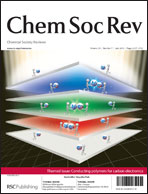In this tutorial review, we cover the solid state physics approach to electronic and optical properties of conducting polymers. We attempt to bring together languages and advantages of the solid state theory for polymers and of the quantum chemistry for monomers. We consider polymers as generic one-dimensional semiconductors with features of strongly correlated electronic systems. Our model combines the long range electron-hole Coulomb attraction with a specific effect of strong intra-monomer electronic correlations, which results in effective intra-monomer electron-hole repulsion. Our approach allows to go beyond the single-chain picture and to compare excitons for polymers in solutions and in films. The approach helps connecting such different questions as shallow singlet and deep triplet excitons, stronger binding of interchain excitons in films, crossings of excitons’ branches, 1/N energies shifts in oligomers. We describe a strong suppression of the luminescence from free charge carriers by long-range Coulomb interactions. Main attention is devoted to the most requested in applications phenyl based polymers. The specifics of the benzene ring monomer give rise to existence of three possible types of excitons: Wannier-Mott, Frenkel and intermediate ones. We discuss experimental manifestations of various excitons and of their transformations. We touch effects of the time-resolved self-trapping by libron modes leading to formation of torsion polarons.

You have access to this article
 Please wait while we load your content...
Something went wrong. Try again?
Please wait while we load your content...
Something went wrong. Try again?


 Please wait while we load your content...
Please wait while we load your content...